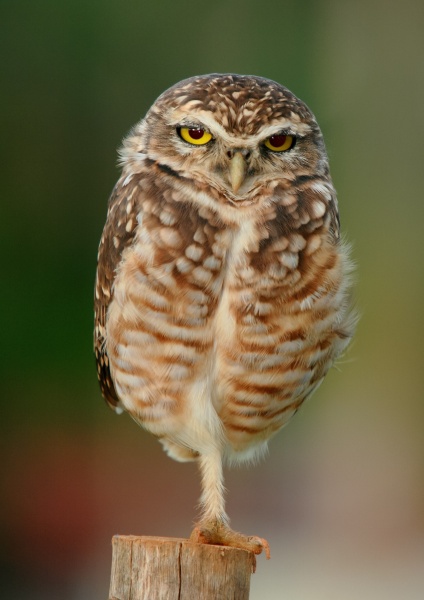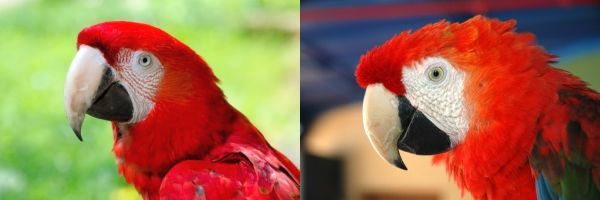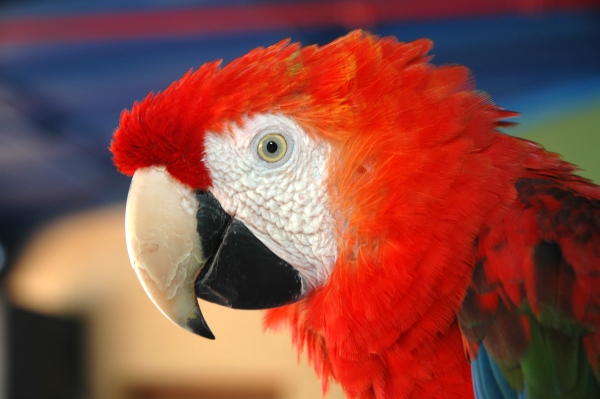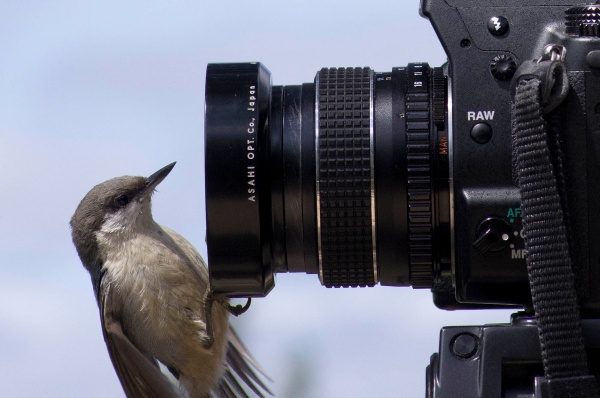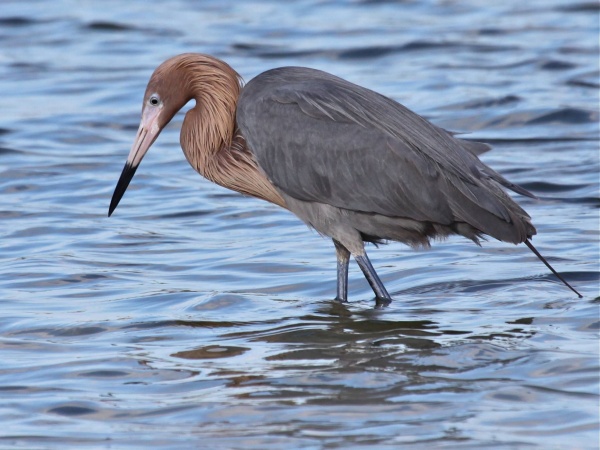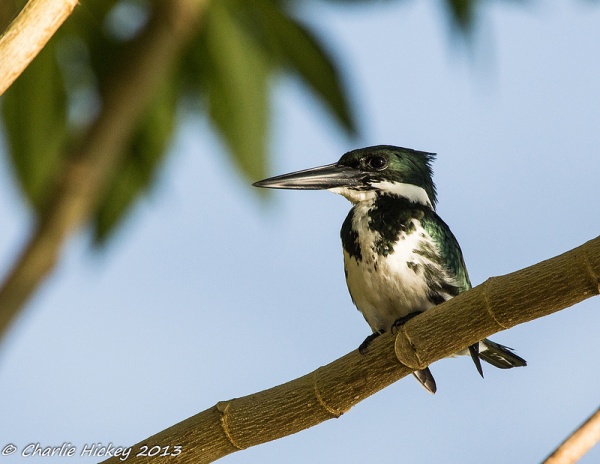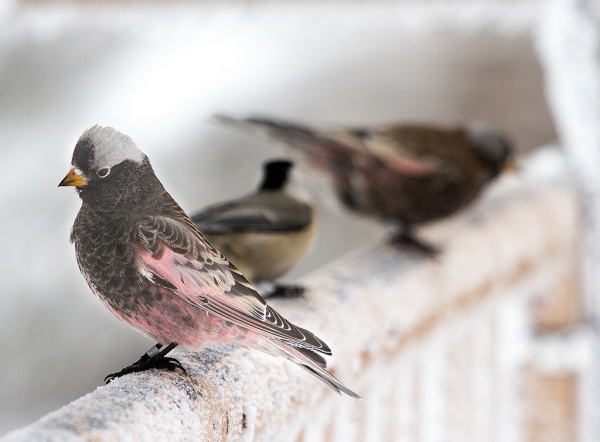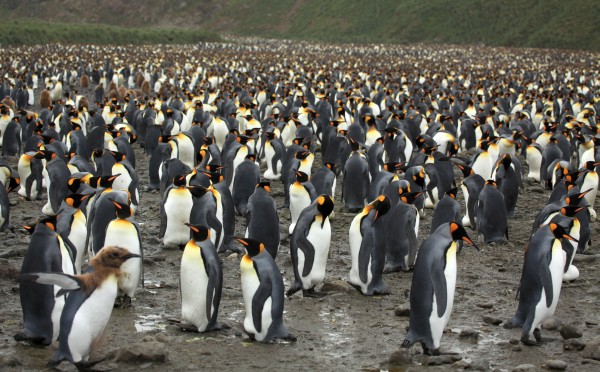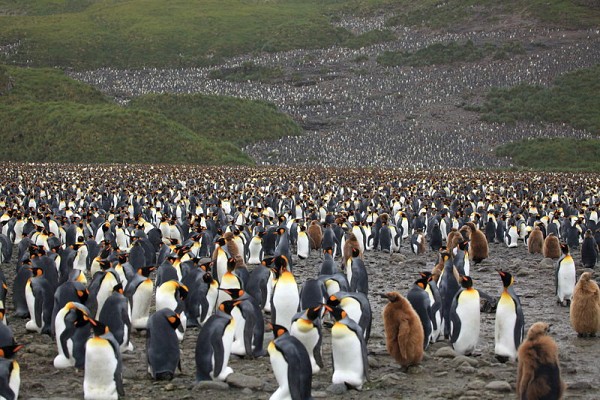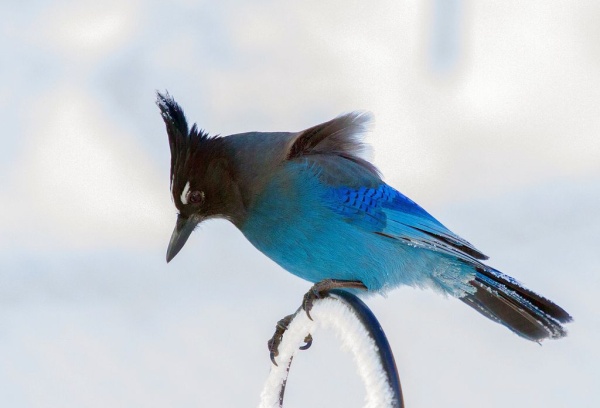
Recent photos by Steve Valasek in New Mexico reminded me that western birds are often very similar to their eastern cousins. Unlike the ecologically equivalent birds who live on different continents but have similar habitat requirements, these live on the same continent but have different habitat requirements.
Here are two western birds that fit the bill.
This Steller’s jay perched on a feeder in the Sandia Mountains is recognizably similar to our blue jay but he lives in evergreen forests in the mountainous West. The blue jay prefers oak forests because he loves acorns. Both jays like to visit bird feeders.
Below, the mountain chickadee also lives in dry evergreen forests in the Western mountains. He looks like a black-capped chickadee except for his white eyebrows. The black-capped chickadee is far less picky about habitat and can be found in deciduous and evergreen forests, residential neighborhoods, weedy fields and cattail marshes. Because of this the black-capped has a wider range.
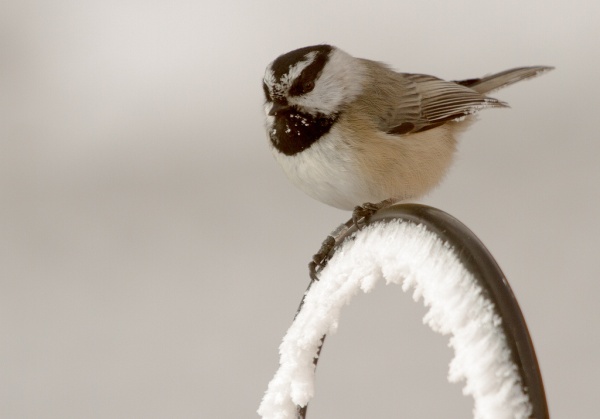
And finally, a seed-eating generalist, this dark-eyed junco shows how different he looks in the West. He’s different but the same.
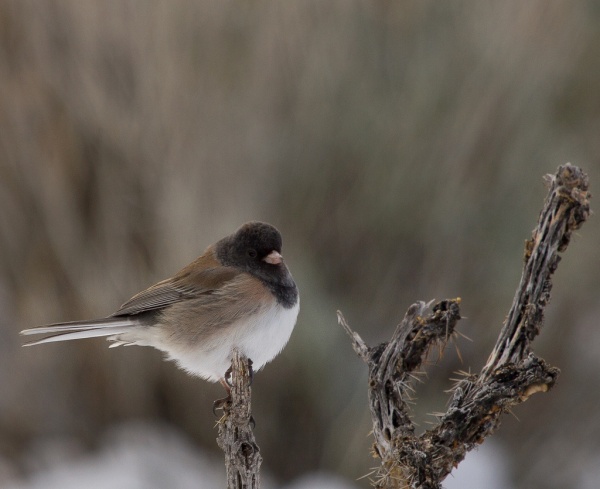
Juncos breed in northern or mountain forests but can be found in a wide variety of habitats in winter.
When I first started birding juncos like this one were listed as a separate species, the Oregon junco. Since then evidence has shown that the slate-colored junco of the East, the Oregon junco of the West, and the “white-winged” and “gray-headed” juncos are different races of the same species, now called the dark-eyed junco.
There is still much scientific discussion about the “lumping” of the junco. Given enough time and isolation eastern and western juncos could become separate species and settle the question for us.
(photos by Steve Valasek)
